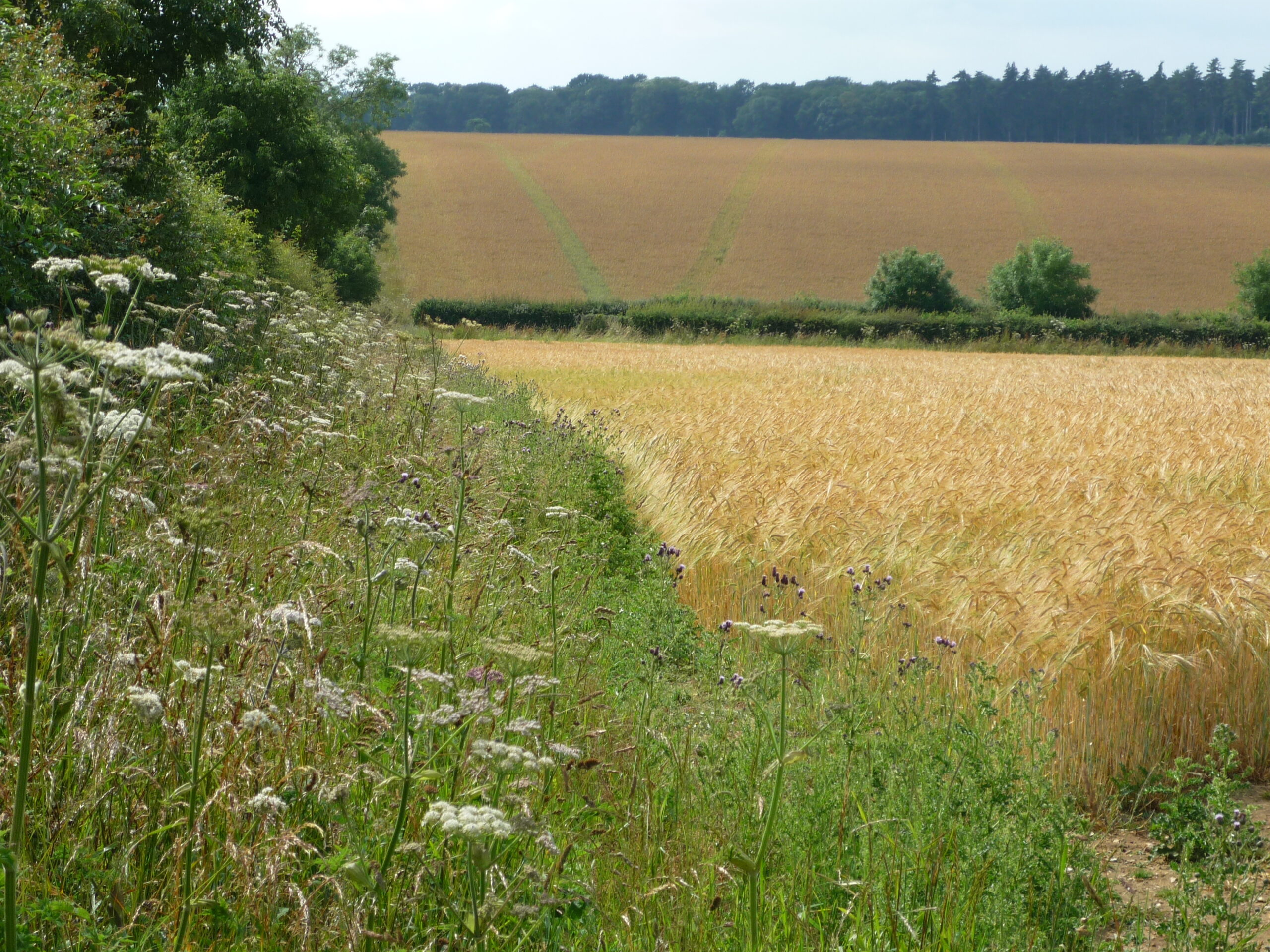With the prohibition of Plant Protection Products (PPPs) on Ecological Focus Areas, many are looking for alternatives to growing Nitrogen Fixing Crops (NFC) to satisfy their EFA requirement. We have had a number of enquiries regarding Field Margins and this article sets out the situation. The Greening Guidance is expected to be published at the same time as the BPS Manual, which will give detailed rules, but below is our present understanding.
Field Margins replace ‘Buffer Strips’ in the Greening rules from this year – the big difference is they don’t need to be next to a watercourse – you can put a Field Margin against any boundary. The minimum width for a Field Margin is just 1m, so most existing Cross-compliance margins meet the requirements. (Note, however, that the X-compliance strip is 2m from the centre of the hedge and the Field Margin is 1m from the edge of the hedge, so be careful if you have a very wide hedge).
Each 1m run of Field Margin gives you 9m2 squared of EFA so it is a very generous weighting. In addition, it is possible to claim for both the Hedge and Field Margin for the same boundary, without having to make any deductions in the EFA output of either. This means that 1m of hedge and a 1m margin length gives you 14m2 of EFA per one side of the hedge or 28 m2 of EFA if you can claim both sides of the hedge (if you can claim both sides of the hedge you would normally claim for each half in the associated eligible parcel).
Field Margins are a ‘linear feature’ under Greening and hence there is no need to split them out into separate parcels on the online system; you only have to record the linear metres, which will ‘filter’ through into the Greening section, so this makes completing the form much simpler for Margins as opposed to Fallow.
Where you have wide fallow strips around the edge of fields it is possible to claim the first 1m as Field Margin and then the rest as EFA Fallow. However, the RPA require that the two types of EFA be ‘visually distinguishable’. Unless claimants are prepared to go around mowing these margins at different heights, or they have a different seed mixture, it may be best to steer clear of this. Because Field Margins give you 9m2 squared for every 1m run, if you have any fallow strips that are less than 9m wide, it makes sense to enter it as Field Margin rather than EFA Fallow.

